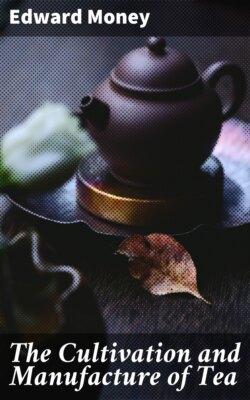Читать книгу The Cultivation and Manufacture of Tea - Edward Money - Страница 10
На сайте Литреса книга снята с продажи.
Chittagong.
ОглавлениеTable of Contents
This is a comparatively new locality for Tea. The climate is better than Cachar in the one respect that there is less cold weather, but inferior in the more important fact that much less rain falls in the spring. In this latter respect it is also inferior to Assam, particularly to Northern Assam. There is one part of Chittagong, the Hill Tracts (Tea has scarcely been much tried there yet), which, in the fact of spring rains, is superior to other parts of the province, as also in soil, for it is much richer there. On the whole, however, Chittagong must yield the palm to both Assam and Cachar on the score of climate, and also, I think, of soil. For though good rich tracts are occasionally met with, they are not so plentiful as in the two last-named districts. Always, however, excepting the Hill Tracts of Chittagong; there the soil is, I think, quite equal to either Assam or Cachar.
As regards labour (a very essential point to successful Tea cultivation), Chittagong is most fortunate. With few exceptions (and those only partial) all the plantations are carried on with local labour, which—excepting for about two months, the rice-time—is abundant.
For transport (being on the coast with a convenient harbour, a continually increasing trade, ships also running direct to and from England), it is very advantageously situated.
Chittagong possesses another advantage over all other Tea districts in its large supply of manure. The country is thickly populated, and necessarily large herds of cattle exist. The natives do not use manure for rice (almost the sole cultivation), and, consequently, planters can have it almost for the asking. The enormous advantages of manure in Tea cultivation are not yet generally appreciated: it will certainly double the ordinary yield of a Tea garden. A chapter is devoted to this subject.
